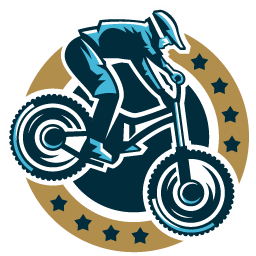
Key Takeaways
- Merge into the bike lane for right turns when safe.
- Only use the bike lane to turn right when no cyclists are present.
- Maintain a safe speed and approach the intersection cautiously.
- Technological advancements enhance safety when using bike lanes to make right turns.
Traffic rules and regulations surround bike lanes and right turns for enhanced safety. But can you use a bike lane to turn right?
Yes, you can use a bike lane to turn right. However, there are some very important caveats you need to follow. Safety and traffic laws are paramount, and understanding your responsibilities at the intersection will help keep everyone out of harm's way.
As a seasoned expert, I've spent countless hours behind the wheel, and navigating traffic rules has become second nature. I have a mixture of personal experience and a dollop of research to ensure I'm providing the most accurate and up-to-date information. So, keep your eyes peeled for more tips and tricks as we maneuver through the ins and outs of right turns and bike lanes.
Can You Use A Bike Lane To Turn Right?
Have you ever been cruising along in your car and found yourself wondering if you can dip into that bike lane when you're itching to make a right turn?
Yes, you can use a bike lane to turn right. However, turning right on a bike lane isn't just about flicking your blinker on and hoping for the best.
There are some rules to keep in mind to ensure both you and those pedal-powered road buddies stay safe.
Check for Traffic
Before considering merging into the bike lane, it's imperative to thoroughly check for any potential hazards. Utilize your rearview and side mirrors to assess the traffic situation behind you.
However, remember that mirrors may have blind spots, so perform a shoulder check to identify any cyclists or vehicles in your blind spots who might be using the bike lane. Being aware of your surroundings is crucial to avoid collisions.
Signal Your Intentions
Effective communication is fundamental to road safety. When you approach an intersection where you plan to make a right turn, signal your intentions clearly and in advance.
Activate your vehicle's right-turn signal to inform other road users of your impending turn. If you're riding a bicycle, employ standard hand signals to indicate your turn direction to both motorists and fellow cyclists.
These signals help create a predictable traffic environment and reduce the risk of sudden and unexpected maneuvers.
Scan for Bicyclists
Bicyclists share the road with motor vehicles and deserve special attention. Keep a vigilant eye out for cyclists as you approach the intersection. Cyclists can approach swiftly and may come from your blind spots, making regular scanning crucial.
Check your mirrors for any cyclists in the bike lane and perform shoulder checks to ensure no cyclists are nearby.
Always prioritize yielding the right-of-way to cyclists and ensure they have a safe and clear path before merging into the bike lane.
Yield to Pedestrians
Pedestrians always have the right of way in crosswalks. As you approach an intersection, be prepared to yield to pedestrians who may be crossing the street.
Show respect and patience by allowing them to safely traverse the crosswalk. A courteous nod or wave can acknowledge their right of way and contribute to a harmonious flow of traffic.
Watch for Right-Turning Vehicles
Besides cyclists, keep a watchful eye on other vehicles that may also be signaling to make a right turn at the intersection. Both you and another driver might be aiming for the same spot in the intersection.
Exercise caution and practice defensive driving to prevent potential collisions or traffic congestion. Maintain a safe following distance and be ready to yield if necessary.
Maintain a Safe Speed
While navigating these steps, remember the importance of maintaining a safe and controlled speed. Avoid rushing or making sudden, jerky movements.
Approach the intersection at a speed that allows you to respond effectively to changing conditions or unexpected developments.
Safe and patient driving ensures a smooth and secure transition into the bike lane for your right turn, promoting overall road safety.
How Technological Advancements Enhance Safety in Right Turns from Bike Lanes
As our roadways become increasingly shared spaces for motorists and cyclists, ensuring the safety of all road users has never been more critical.
Right turns from bike lanes, in particular, can pose challenges and potential risks, as drivers need to navigate intersections while being mindful of cyclists traveling alongside them.
To address these challenges and enhance road safety, a wave of technological advancements has emerged, offering innovative solutions.
Here's your quick guide on the technological safety implications when using bike lanes for right turns:
These technological advancements collectively contribute to making right turns from bike lanes safer for both drivers and cyclists. They increase awareness, reduce blind spots, and facilitate communication between vehicles and bicycles.
Frequently Asked Questions
Here are the FAQs on the use of bike lanes to turn right.
Are there any exceptions to using the bike lane for a right turn?
Some areas may have specific exceptions or restrictions on using bike lanes for right turns, such as during certain hours or at specific intersections. Always be aware of any local ordinances or signage that may apply.
Can I use the bike lane to pass slower-moving traffic and then make a right turn?
Using the bike lane to pass slower-moving traffic and then making a right turn is generally discouraged and may be illegal in some areas. The bike lane is primarily designated for the safety and convenience of cyclists.
What specific risks should drivers be aware of when making turns in areas with bike lanes?
Think of bike lanes as thin strips of cyclist sanctuary. When you cross into their zone, the risk of a rumble rises. Watch for speedsters on two wheels and those pedal-powered cyclists who seem to appear out of nowhere.


















.avif)
